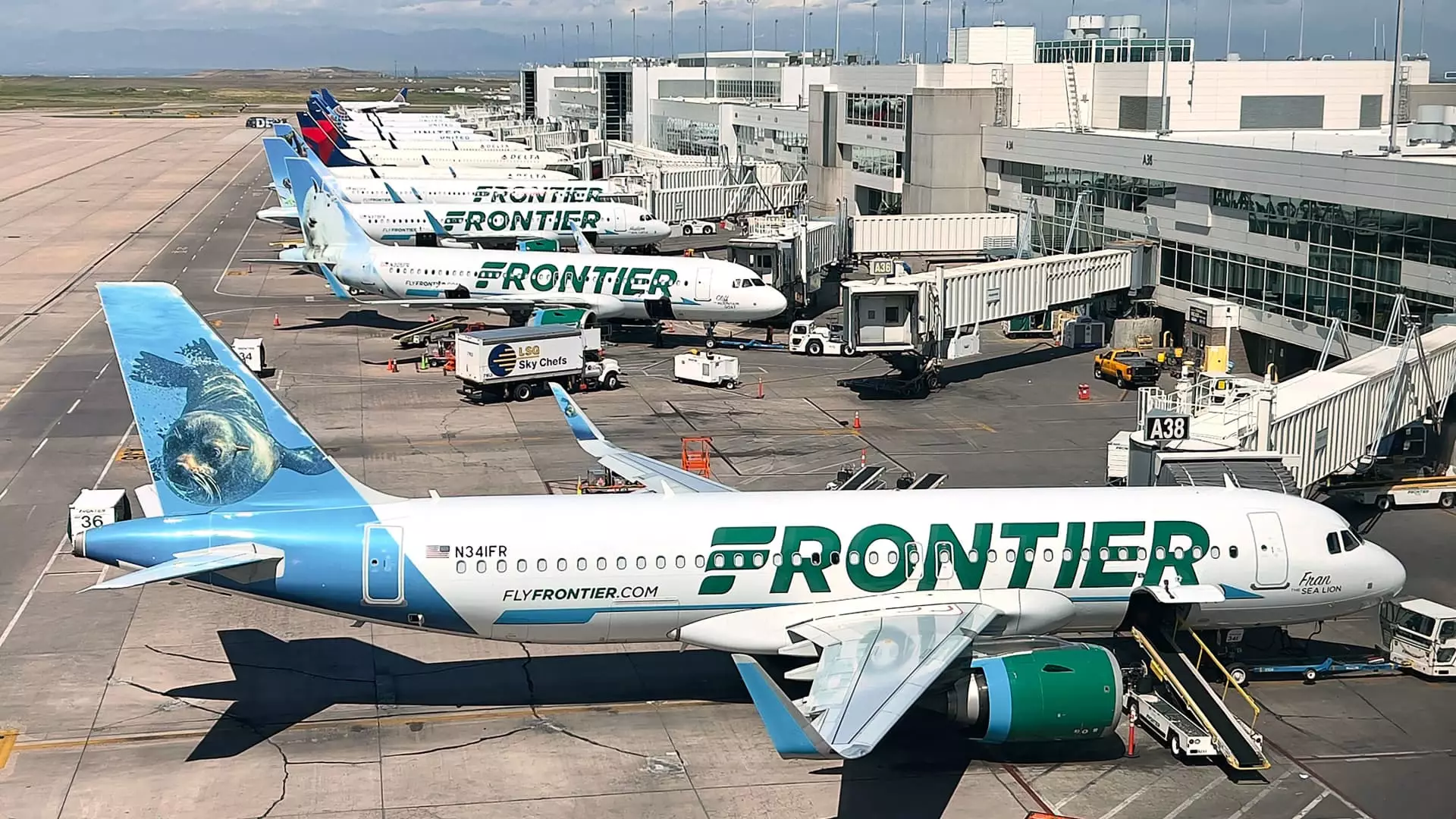Frontier Airlines, a prominent player in the low-cost airline industry, is carving out a new niche by introducing first-class seating options to its fleet. This strategic shift emerges as the airline seeks to adapt to a market where consumer preferences are gradually leaning toward more spacious and comfortable travel experiences. Starting in September, Frontier plans to reconfigure its aircraft by removing the first two rows of its standard three-by-three seating arrangement, giving way to a new two-by-two layout that will feature four first-class seats. This change indicates Frontier’s recognition of the evolving desires of air travelers who are increasingly willing to spend more for enhanced comfort during their flights.
In tandem with the addition of first-class seats, Frontier is also overhauling its loyalty program. This program will now provide complimentary seat upgrades to its gold-level membership and above when available, as well as a free companion ticket for platinum and diamond-level members. Such initiatives not only aim to reward loyal customers but also to position Frontier more competitively against larger carriers that have long dominated the premium travel segment. By mid-2025, passengers will also have the opportunity to redeem miles for upgrades, demonstrating a commitment to maximizing the value of customer loyalty and enhancing the overall flying experience.
Financial Projections and Market Competitiveness
Frontier’s CEO, Barry Biffle, projects that these initiatives could potentially generate an additional $250 million in revenue by 2026 and exceed $500 million by 2028. In Biffle’s perspective, the current revenue model of the airline lags due to the absence of first-class accommodations and a limited rewards program for frequent fliers. He firmly believes that the introduction of first-class seating will be a “game changer” for the airline, particularly on lucrative cross-country routes where demand for more spacious seating is high. This move not only positions Frontier for financial growth but also addresses the competitive pressure from other airlines that have already invested heavily in premium cabin offerings.
Amidst these changes, Frontier must navigate a competitive landscape filled with established carriers like Delta and United, which have strengthened their appeal through larger seats and additional onboard amenities. While these legacy carriers typically offer extensive cabin service, Frontier maintains that its pricing strategy will remain advantageous, potentially undercutting rivals on fares despite the enhancements. Moreover, Southwest Airlines is also pivoting its strategy to include extra-legroom seats and seat assignments, indicating a broader trend within the industry toward providing more flexible and spacious travel options.
The Future of Budget Airlines in the Premium Space
In the midst of these shifts, Frontier is not alone; other low-cost carriers are also exploring new avenues to attract higher-paying customers. For instance, Spirit Airlines, recently emerging from bankruptcy, has introduced a “Big Front Seat” that mirrors domestic first-class seating. The overarching trend suggests that budget airlines are rethinking their business models to include premium options, thereby making the business of budget flying increasingly competitive. With its new initiatives, Frontier Airlines is poised to redefine what it means to travel affordably while still affording customers a taste of luxury in the sky.


Leave a Reply